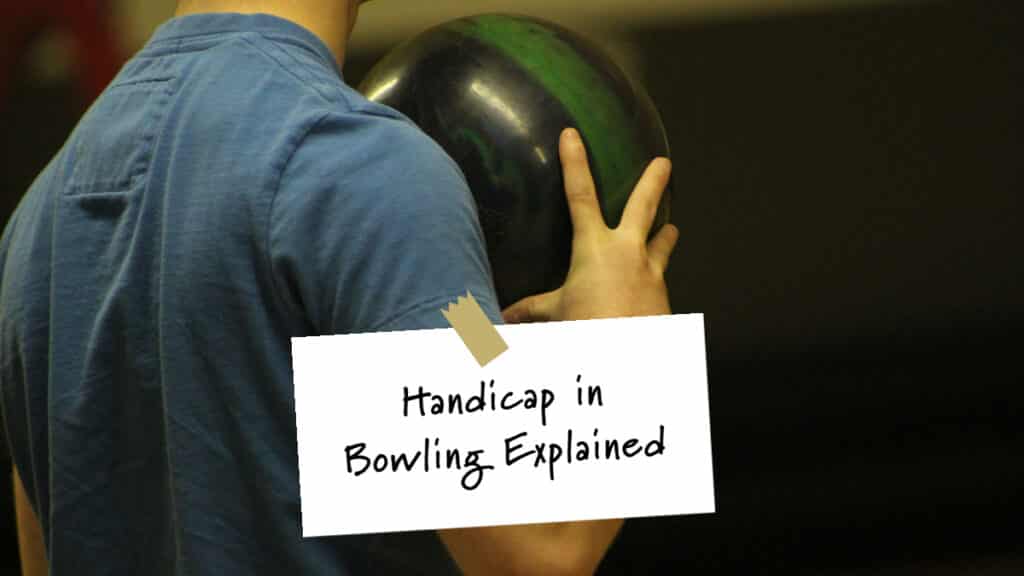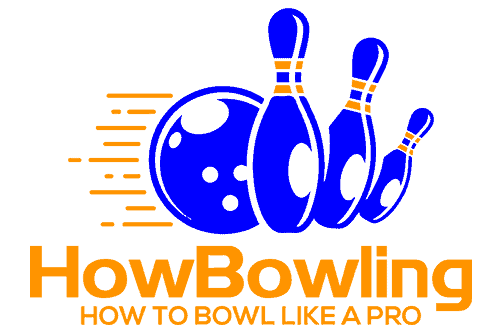Over a few decades, bowling has become a popular and continuously changing sport. Because of this reason, you might not have known about the handicap rule in this game, whether you are a beginner or a professional bowler. Only a few people know this rule, but learning it to improve your game and excel at it is important.
You might be wondering, what is a handicap in bowling? Well, no need to worry because that is precisely what I am here to tell you.
In this article, I will discuss what handicap is, how it works in bowling, how the handicap score is calculated, and a few facts and figures related to the handicap rule. Make sure you read this article until the end if you want to participate in a handicap league or tournament with the best chances of success.

What is a Handicap in Bowling?
Handicap, as the name suggests, is a rule created by the United States Bowling Congress in the 20th century that provides tournament and league competition opportunities to bowlers with varying bowling skills and techniques.
Two people who are not at the same skill level will not play a fair and competitive game while having fun and excitement. That is why this rule is employed in some official games.
There are a lot of negative opinions regarding this rule. However, it allows beginners to hone their skills while providing professionals a challenge to enhance their already incredible playing style.
You can take an idea of the success of the handicap rule from the fact that over 70 out of 100 league games recorded by the United States Bowling Congress (USBC) were won by the teams with better averages and less handicap score advantage. So, there is no unfair dealing in the handicap bowling rule.
How Does Handicap in Bowling Work?
Tournaments, amateur and professional leagues, and even friendly games use the handicap rule. You might be wondering how does it work? Well, let us take a look at handicap bowling.
Using the handicap rule, beginners and amateur players are given a fair advantage by being given a handicap score. This score is generated by subtracting their average bowling score from the tournament’s basis score and multiplying it by the handicap percentage.
This handicap score is added to the bowler’s average score, considered their total score. This helps them achieve a better score and a better chance of winning.
However, do not expect you will surely win if you choose players with greater handicap scores in your team. That is not how it works. Handicap teams do not have any undue advantage over other teams. The trick is choosing the players with the highest bowling averages because their skills will increase your chances of winning.
The whole purpose of this rule is to make the game of bowling competitive and enjoyable for the players by providing everyone with an equalization tool in the form of a handicap score.
Calculating Handicap in Bowling
Suppose you are thinking of taking part in a handicap bowling tournament. In that case, you should know how to calculate your personal and your team’s handicap bowling score to get a proper idea of the winning situation.
Figuring a handicap score in bowling can seem difficult, but it is just a formula and takes basic scoring knowledge. Here is how you can calculate the handicap score and how it plays in a tournament.
Taking Basis Score
First and foremost, the organization, alley, or committee holding the handicap tournament takes the basic score. The basis score will ultimately decide the handicap scores of all the beginner and less-skilled bowling individuals.
The basis score is taken from the average of the tournament’s best player or the alley. This helps the committee establish a limit. For example, if the best bowler’s average is 210, the basis score will be taken as 210, and further calculations will occur according to the basis score.
To understand how handicaps work, you must know how bowling is scored. Read about it here: How bowling is scored.
Finding Average of Previous Games
In the next step, as an individual participating in the tournament, the tournament hosting organization or bowling alley will take all the games you played in the last season and the average. This is essential if you want to qualify for a handicap advantage.
Assume that you played 6 games in the last season. Then the sum of all those games divided by 6 will be your average bowling score. If you want the handicap advantage, your score must be less than the tournament’s best bowler’s average.
Subtracting from Basis Score
We are almost there now. Once the basis score and average are figured out, the next calculation will be a subtraction. The average of the individual players is subtracted from the total basis score, and you are left with a sum of numbers.
Bear in mind; this is not the handicap score. Without employing the next step, you will not get a good handicap score advantage for your participating tournament.
Using Handicap Percentage
A significant figure is the handicap percentage. Organizations, tournaments, and leagues decide their exact percentage, but it is mostly 100% or above 70%.
This percentage of the score you were left with in the previous step is considered the handicap score of a player. For example, if the basis score was 210 and your previous average was 170 if the percentage is 100%, you will be left with a handicap of 40 pins per game.
If the percentage is 90, you will have a handicap of 40×0.9 = 36.
Adding Handicap to your Scratch Score
Your scratch score is your score before any handicap is applied to it. So, in a normal game, your total score is your scratch score. But if you are playing an individual or handicap team tournament, your total score would be your scratch score and your handicap score.
Let us say your total score in a game is 170, and the bowling handicap was 40 for you. Then your final score in that game would be 170+40, which equals 210, evens things out.
The Benefit of Handicap Bowling
At this point, you might be wondering, what is the real benefit of handicap in bowling? The handicap rule is less of an unfair advantage and more of an equalizer for people just there to enjoy the game and have a competitive time.
Normally, beginners would have almost no chance of outscoring bowling professionally. Therefore, there would be fewer instances where newbies could play with the pros, and the professionals would not get a lot of competition.
But because of the handicap rule, beginners would have a better chance of winning. In contrast, more professionals will be encouraged to play with newer players, simply popularizing the sport, promoting sportsmanship, and allowing everyone to cool off and have a great time doing what they love – bowling.
Highest Handicap in Bowling
Now, if you are asking, is there a way a ten-pin bowling game may have a handicap that allows you to score 300? Well, technically, yes. It is possible and has occurred in the past but not so much anymore.
A situation where something like this would happen is, let us say, the basis score was 270 in a tournament, and you scored 230 in the game, while the handicap was around 70 because of how well you played the game. Your total score will be 300 according to the rules, and no one can take that away from you.
But let us be real here. Organizations and alleys do not want that. They want an even playing field, not to give a completely overwhelming advantage. That is why most of the tournaments and handicap leagues I have played and have seen in front of my eyes stop the highest basis average at 220; if anyone has a better score, it is ignored.
If you have an average of over 220, most leagues will not give bowlers a handicap, so technically, 219 is the highest possible handicap a bowler can receive.
So, the chances of you scoring a 300 with the help of the handicap score are minimal. It would help if you were looking to practice scoring a perfect game without any handicaps.
That is what a professional does, and that is very common nowadays. Even on record, there are many instances of bowlers scoring a top-notch perfect game, and you can take inspiration from them to achieve just as well.
Conclusion
The handicap bowling rule is vital as well. But with modern advancements, keeping track of all the basics of bowling can be difficult. That is why I thought of clearing the concept of the handicap rule for your ease.
I hope you learned a lot from this guide and will practice bowling and get good enough to be the bowler whose score is taken as the basis. That is the ultimate goal. Have a great time when you go to score strikes and spares at the bowling alley again.




